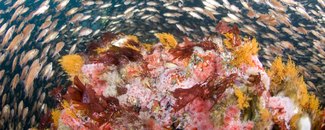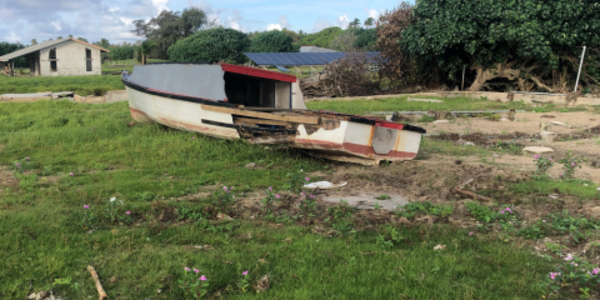
One of the first scientific concepts that children are taught is that humans breathe in oxygen and breathe out carbon dioxide, and plants take in carbon dioxide and produce oxygen. But carbon dioxide’s role on Earth is much more complicated than this simple cycle. Human activities, such as fossil fuel burning, deforestation, and cement production release large amounts of carbon dioxide (CO2) into the atmosphere. Since the beginning of the Industrial Revolution, atmospheric CO2 concentrations have increased by over 40%. Studies show that heat-trapping (greenhouse) gases like CO2 have been causing Earth’s climate to change.
The ocean absorbs about 20-30% of the CO2 that is released into the atmosphere, helping reduce its impact on climate change. However, when CO2 is absorbed by seawater, a series of chemical reactions occur causing the seawater to become more acidic and carbonate ions to decrease, making it harder for some sea creatures like corals, oysters, and clams to build and maintain their shell and skeletal structures. This phenomenon is commonly referred to as ocean acidification. With more than a billion people relying on food from the ocean as their primary source of protein, and the fisheries, aquaculture, and tourism industry for their livelihood, rising atmospheric CO2 and ocean acidification can have a large impact on their community.
Carbon Cycling and Science
Investigating carbon cycling in the ocean is critical to the understanding of both global climate change and ocean acidification. Sound scientific data can inform scientists, managers, and policy makers as they cope with these issues. NCEI created the Ocean Carbon Data and Acidification System (OCADS) to put all ocean carbon and ocean acidification data into one repository. The OCADS collection includes ocean carbon measurements from a variety of platforms, including research ships, ships of opportunity, commercial ships, autonomous vehicles and mooring buoys; as well as biological ocean acidification data, e.g., those collected from laboratory experiment based studies; and model output data.
OCADS provides data management support and hosts the generated data product for the Global Ocean Data Analysis Project (GLODAP). Considered to be one of the most important databases in oceanography, GLODAP is the data-synthesis product based on discrete profile data collected from oceanographic research cruises and provides the highest quality of oceanographic data. GLODAPv2.2022 is an update of the previous version and extends the time coverage to 2021 with 96 additional cruises.
GLODAPv2.2022 includes measurements from more than 1.4 million water samples collected on 1085 global oceanic cruises. The data for the 13 core variables have undergone extensive quality control, especially systematic evaluation of bias. The data are available in two formats: 1) as submitted by the data originator but updated to World Ocean Circulation Experiment exchange format and 2) as a merged data product with adjustments applied to minimize bias.
NCEI hosts and provides access to data collected from around the world, including the data previously archived at the Carbon Dioxide Information Analysis Center (CDIAC-Oceans) at the Oak Ridge National Laboratory. OCADS archives data from several oceanographic projects: World Ocean Circulation Experiment (WOCE); Climate Variability Project (CLIVAR); Global Ocean Ship-Based and Hydrographic Investigations Program (GO-SHIP); Ships of Opportunity Program (SOOP); Moorings and Time-series and autonomous surface vehicles projects; and more. In addition to providing access to the data through interactive maps and the Ocean Carbon and Acidification Data System Portal, NCEI also archives the data to ensure the historical versions are preserved for future users.



